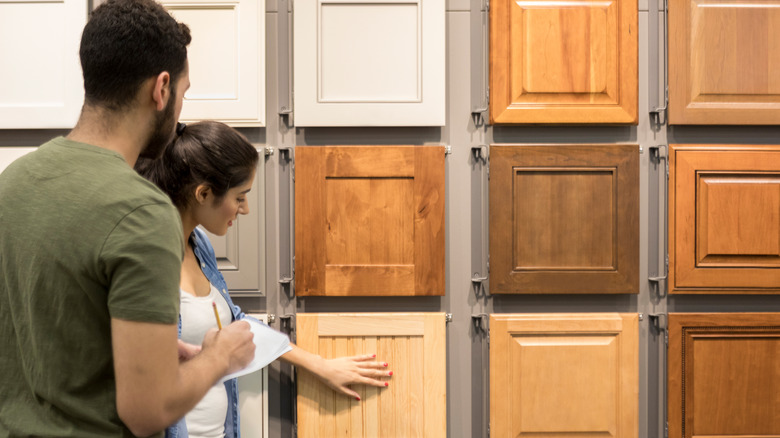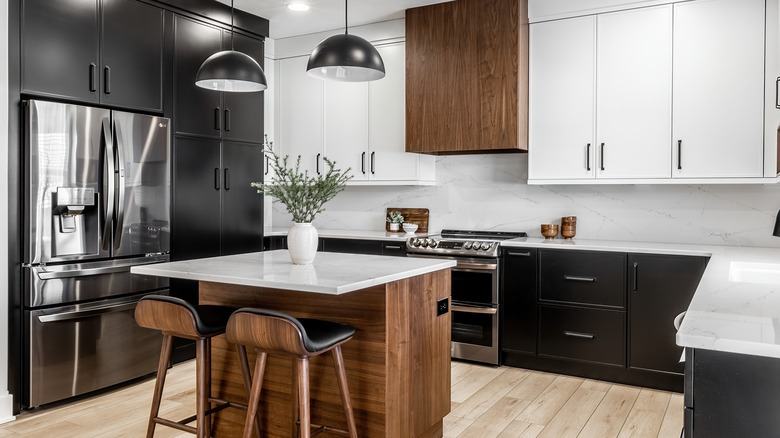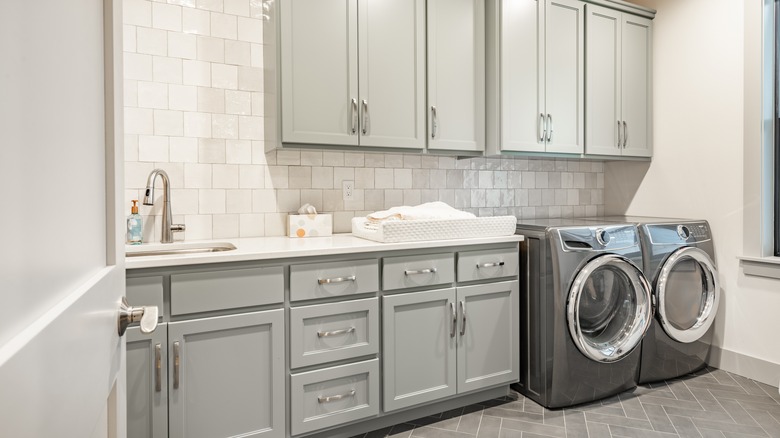Tips To Make Your Cabinets Seamlessly Flow Throughout Your Home
Often, cabinets will match each other by default because it's the easiest, most cost-effective way to go when building a home: pick one set for the kitchen, another set for the bathrooms, and you're good to go. You can even use kitchen cabinets in the bathroom to match the two exactly. But aside from matching, you can also make your cabinets seamlessly flow throughout your home by strategically using color and cohesion. In other words, while you might mix and match certain elements, others should stay the same.
Mismatched cabinets can cost more to build, especially if the style or material is different. But this approach also offers more opportunities to experiment with design, show your personality, and make your home appear more dynamic and interesting. However, there's a fine line between interesting and cluttered. If you want some variety but still want your cabinets to have a logical flow throughout the house, read on.
Maintaining cohesion is key
When choosing cabinets, it's helpful to consider each individual element: the material or wood type, paint or stain color, door style, and type of cabinet hardware. Each of these elements offers an opportunity to add both variety and cohesion. One easy way is to change one element but keep the rest of the elements the same. For example, you might use one cabinet type throughout the home, but switch up the color. Or, conversely, you could use different cabinet styles that are all painted the same color. Even using the same hardware on all of your different cabinets can help create a more unified, seamless look.
Another way to maintain cohesion is to use the same color or style in multiple places in the home. For example, you might paint the kitchen island a contrasting color to the cabinets to create emphasis in that room, and then use that same color elsewhere in the home to help tie the design together. If there are areas of the home where you can see multiple cabinets at the same time, like viewing a guest bathroom from the kitchen, you should be careful that those cabinets don't visually clash.
Lastly, think about where you want to place your different cabinet styles or colors. Grouping each cabinet with a certain style together is often a safe bet — above the sink, or lower kitchen cabinets, for example. Strategically grouping cabinets in each room also helps create a sense of transition.
Choose colors carefully
Colors are a key factor in design that can make a huge difference in how the space flows and how cohesive it looks. Even if your cabinets are all unpainted, color plays a role because each wood stain has distinctive warm or cool undertones that should go together. To match painted cabinets, one easy method is to look at complementary colors, or colors that are opposite from each other on a color wheel, such as blue and orange, yellow and purple, and red and green. Another option is to keep the base color the same and use variations of that, such as a deep blue with a lighter shade of blue. You can also stick to neutrals, adding just one accent color for contrast and emphasis.
Placement plays a role in choosing your colors as well. Lighter colors tend to open up the space, and dark colors do the opposite. So if you want to create a more open kitchen, you might place lighter cabinets on top, or you could do the opposite to create a cozier feel. To create balance, it can help to keep the look symmetrical, but asymmetry can also work if done intentionally and carefully.


